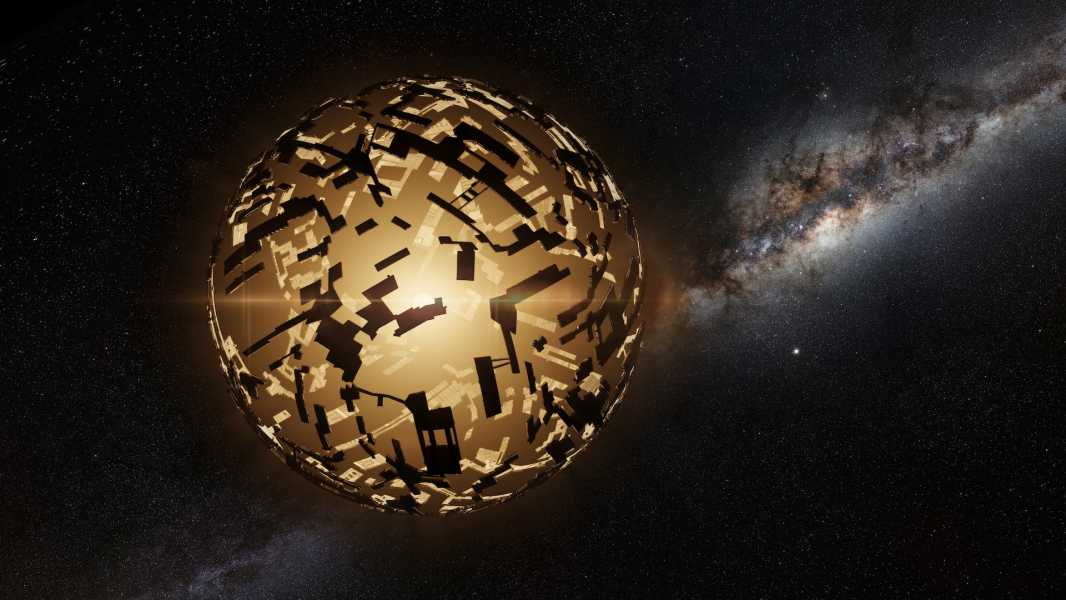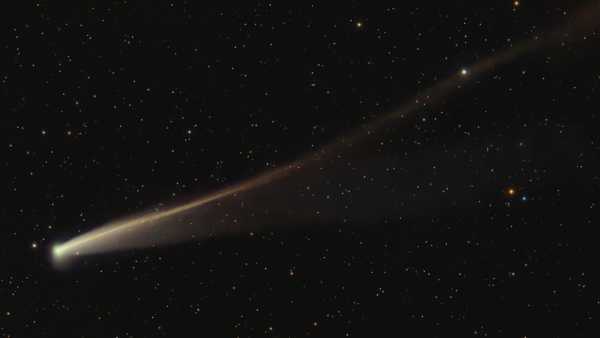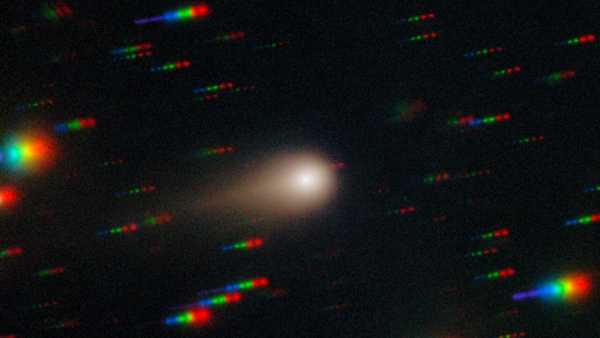
An illustration of a Dyson sphere, a hypothetical design that aliens could use to harness the energy of stars. (Image credit: dottedhippo via Getty Images)
An advanced alien civilization might want to travel across the galaxy, and the best way to do so would be to relocate its binary star system, a researcher suggests in a new paper.
Long-lived civilizations may have many reasons for moving to other parts of the galaxy. For example, they may want to avoid an impending supernova. Perhaps they need to explore our new natural resources. Or maybe they’re just hungry for adventure.
However, given the vast distances between stars, interstellar travel is extremely difficult and time-consuming. So, rather than abandoning their system, a determined alien race might choose to take their system with them. The main advantage of accelerating their star is that they can preserve it as they move. This would be achieved by forcing their star to either emit or lose mass in only one direction, allowing the star and all of its planets to be transported to a new part of the galaxy.
Astronomers have explored the possibility that “hypervelocity” stars (as their name suggests, they are stars moving at unusually high speeds) might have been deliberately launched by alien civilizations, but known candidates show no signs of artificial intervention.
In a recent paper, Clement Vidal, a philosopher at the Free University of Brussels in Belgium, noted that most stars are not single but are in binary systems. That means we could be missing out on half of the potential artificially accelerated stars. Moreover, binary systems offer many advantages over single stars, Vidal wrote in his paper, which has not been peer-reviewed or published in a scientific journal.
Vidal considered a model system consisting of a neutron star and a low-mass star orbiting it. This configuration provides the greatest flexibility in control and propulsion.
An alien civilization would have to find a way to eject material from the star. This could be done with asymmetric magnetic fields or a device that causes uneven heating on the star's surface. Regardless of the method used, the goal is to force the star to eject more material in one direction than the other. This would create a thrust that would push the binary system in the opposite direction, Vidal explained.
If a civilization installed machines on or near a neutron star, where strong gravity could provide a ready source of power, they could control the binary system by carefully switching the machine on and off. For example, if they activated the machine at the same point in the orbit, it would steer the binary in one direction. If they left the machine activated a little longer, they could adjust its course, sending it in any direction they wanted along the orbital plane.
They could even redirect their system into new directions outside of orbit by changing the angle at which their machine was pointed, effectively changing the neutron star's orbit around its companion.
Surprisingly, there are real systems in the universe that meet these criteria, such as the black widow pulsar PSR J0610-2100 and the red pulsar PSR J2043+1711. Both of these systems show significant acceleration. Although they are unlikely to have been created by alien engineering, they are worth paying attention to, Vidal concludes. At least while they still exist.
Sourse: www.livescience.com





